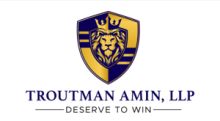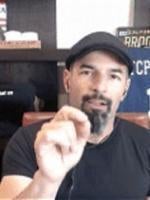Well that was scary.
One would think that using an outbound manual call process that included physical desk phones and that required agents to enter all 10 digits of a phone number on a keypad in order to launch a call would be TCPA-proof. Think again.
As one defendant just found out, using a software-enabled workflow tool that also has dialing capabilities as part of a manual process can lead to dire TCPA consequences. This is true even where agents are ultimately putting fingers to keys to launch calls. Luckily, however, the defendant in Folkerts v Seterus, Inc., Case No. 17 c 4171, 2019 U.S. Dist. Lexis 42347 (N.D. Ill. Mar. 15, 2019) avoided liability when the court went on to determine that a dialing system must utilize random or sequential number generation to qualify as an ATDS under the TCPA.
There is lots to unpackage here, so let’s dive in.
Like many companies, the Folkerts defendant used several software systems in the course of its outbound calling efforts. For predictive mode calls, the defendant used a common predictive dialer platform – a product the court repeatedly characterized as an ATDS for some reason. For manual calls, however, the defendant used manual desktop phones, made by the same company that supplied the predictive dialer– Czar says that’s a no-no folks – and the evidence was clear that it was these desk phones that were used to call plaintiffs. The manual phones did not store any lists of phone numbers and cannot generate random or sequential numbers. Instead, to make a call using a manual phone, a representative picks up the phone and manually dials each digit of the phone number. So far, so manual.
But then things get integrated. The manual phones and the predictive dialer system of the same brand were both linked to SynTelate, “a software program on each representative’s computer through which a representative can log into their manual phone.” Uh oh.
Still, SynTelate does not seem to be a dialer – rather it is a workflow tool allowing “agents to access customer information, the loan databases and the telephone system” to “manage the note taking process.” As used by the defendant, SynTelate showed an agent on the computer screen the number that defendant wanted an agent to dial – the agent must then dial all 10 digits. But defendant’s policy and procedure manual (mistakenly?) described SynTelate as “a predictive dialer system. which interfaces with our servicing system.” *Face palm* (When asked about this discrepancy, the manager of defendant’s Contact Strategy Department, explained: “I would say that is an error. I do not know why they say that….”) And plaintiff’s expert opined that the company that made the workflow software also makes predictive dialers: “[t]he material published by Seterus and the manufacture[r] clearly show that it is a predictive dialer.” Oh, bother.
At summary judgment, plaintiff’s entire case rested on asking the court to find that the SynTelate workflow tool was an ATDS “used” to “make” the manual calls. In addressing the core issue of ATDS usage, the court first rejected the defendant’s argument that no reasonable jury could find that SynTelate was used to call plaintiffs’ phones. In the court’s view, testimony that SynTelate “make[s] the queueing happen for manual outbound calls” and that representatives “log into their manual phones through SynTelate” was sufficient to treat SynTelate as the system used to make the calls at issue.
Let that sink in, friends. The TCPA governs calls “made” using an ATDS. The equipment used to make the calls here seem to be desk phones – not the workflow tool, which did not dial plaintiffs’ numbers. Yet the court is focused on how the numbers were presented to the agents to begin with. Perhaps the critical testimony related to “logging in” to the manual phones through the software – that is a little weird – but what a leap the court takes in suggesting that software that merely presents phone numbers was “used” to make calls. Unnerving to say the least.
The scary analysis is not done yet, though. Next, the court concludes that the workflow tool has the “capacity to dial numbers,” even if that capacity was not used with respect to the plaintiffs. Here, the court would not allow the defendant to escape the contents of its errant policies and procedures. Although the statements in the manuals are not binding on the defendant, they are evidence to be weighed against the testimony of the defendant’s witness. The court finds that the jury could disregard the 30(b)(6) witnesses’ testimony in favor of the manuals if they so decided. Eesh.
But, just when things are at their darkest, a little St. Patrick’s day luck finds the defendant. The court reads the TCPA as requiring random or sequential number generation – a pretty reasonable interpretation, since that is what the statute actually says – and finds there is no evidence that SynTelate can “presently” generate numbers in that fashion. And just like that, Folkerts is a great case for defendants.
In addressing the issue of ATDS functionality, the court concludes that: (1) to be an ATDS, the equipment at issue must have the present, as opposed to merely the potential, capacity to function as an ATDS; and (2) equipment that merely has the ability to dial numbers from a stored list, as opposed to producing numbers using a random or sequential number generator, does not qualify as an ATDS. Folkert at *18. Wonderful! Thus, as Folkerts explains, a “predictive dialer” no longer automatically qualifies as an ATDS and “the ‘potential capacity’ of defendant’s systems is irrelevant; in other words, using a system that could function as an autodialer only if some other software was added to it does not constitute use of an ATDS.” Well, pop the champagne and cue the kazoos!
After teeing up the legal issues thusly, it was a short road to concluding judgment was proper for the defendant. Plaintiff had no evidence that either SynTelate or the manual phone had the present capacity to randomly or sequentially dial numbers. And plaintiff cannot prevail on a TCPA claim by demonstrating merely that defendant owns an ATDS – it must prove usage of the ATDS. Plaintiff did not. So, Defendant wins.
Folkerts will be widely heralded as a big win for TCPA defendants – and it is – but there is also a dark side to the decision that shows why TCPA compliance officers and call center operators must remain ever vigilant.
A few nuanced takeaways here. Although the court found that random and sequential number generation is required to qualify as an ATDS it also, somehow, found that Defendant’s predictive dialer is an ATDS, which is weird because: (1) that issue was not before the court; and (2) the dialer (which I am not allowed to name in this piece– hate that) is one I am well aware of and it does not randomly or sequentially generate numbers. Nonetheless the court treated the system as if it were certainly an ATDS. See Folkerts at *18-19 (“Certainly, once the [predictive dialer] is employed, defendant is able to make autodialed calls…”) Weird and weird. The court also finds that errant descriptions of ATDS capabilities within a defendant’s manuals can be used as evidence of a system’s capacity; even if the 30(b)(6) testimony is contrary.
But most importantly – Folkerts is a first of its kind decision that holds, rather directly, that if a workflow tool has the capacity to operate as an ATDS a defendant can be held liable for “using” an ATDS even with a manual process that utilizes fingers on keys and physical desk phones to launch calls. While that worked out ok for defendant in Folkerts – the court rejected Marks and followed the Pinkus line of reasoning requiring random and sequential number generation – another court following Folkerts’ reasoning on workflow software might yet reach a different conclusion on ATDS functionality – and that could have far-reaching and devastating consequences for a defendant. (Any of you with call centers still using a dialer program as your workflow tool in your manual process may want to give me a call right about now.)
Stay safe out there TCPAworld.
Stay safe out there, TCPAWorld.




 />i
/>i
